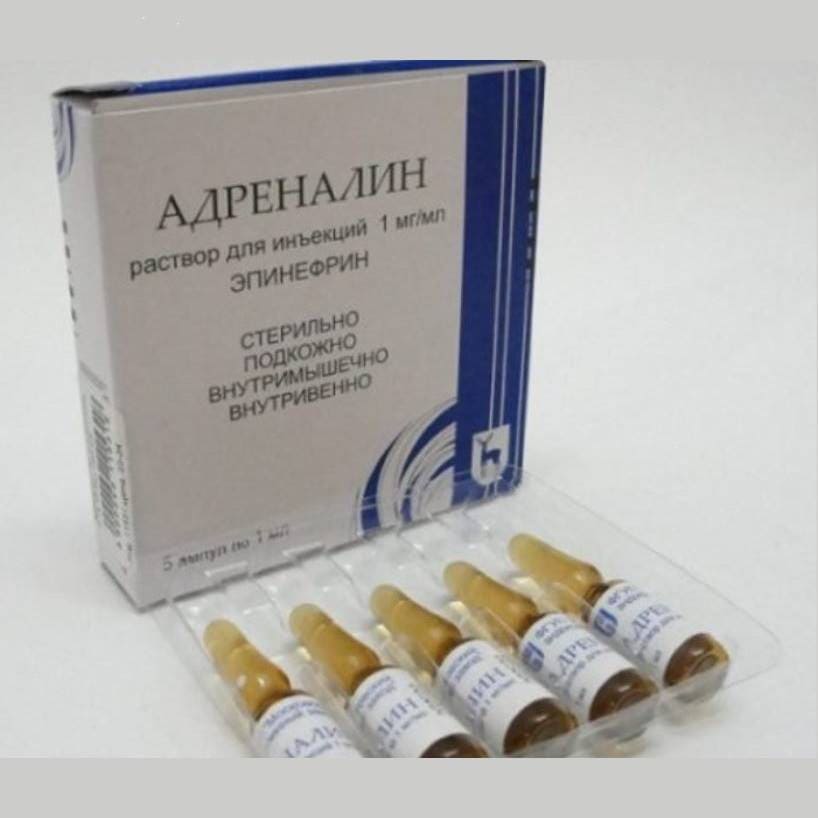You have no items in your shopping cart.

Sku:
Pharmacological action
Adrenomimetic, has a direct stimulating effect on α- and β-adrenergic receptors.
Under the influence of epinephrine (adrenaline) due to stimulation of α-adrenoreceptors, the content of intracellular calcium in smooth muscles increases. Activation of α1-adrenergic receptors increases the activity of phospholipase C (through stimulation of the G protein) and the formation of inositol triphosphate and diacylglycerol. This facilitates the release of calcium from the sarcoplasmic reticulum depot. Activation of α2-adrenergic receptors leads to the discovery of calcium channels and an increase in calcium entry into cells.
Stimulation of β-adrenergic receptors causes G-protein-induced activation of adenylate cyclase and an increase in cAMP production. This process is the trigger mechanism for the development of reactions from various target organs. As a result of stimulation of β1-adrenergic receptors in the tissues of the heart, intracellular calcium increases. With the stimulation of β2-adrenoreceptors, free intracellular calcium in the smooth muscles decreases, due, on the one hand, to an increase in its transport from the cell, and on the other hand, to its accumulation in the sarcoplasmic reticulum depot.
Has a pronounced effect on the cardiovascular system. Increases the frequency and strength of the heart, stroke and minute volume of the heart. Improves AV-conductivity, increases automatism. Increases myocardial oxygen demand. It causes constriction of the vessels of the abdominal organs, skin, mucous membranes, to a lesser extent - skeletal muscles. Increases blood pressure (mainly systolic), in high doses increases OPSS. The pressor effect can cause a short-term reflex slowing of the heart rate.
Epinephrine (adrenaline) relaxes the smooth muscles of the bronchi, lowers the tone and motility of the gastrointestinal tract, dilates the pupils, helps lower the intraocular pressure. It causes hyperglycemia and increases the content of free fatty acids in the plasma.
Indications
Allergic reactions of immediate type (including urticaria, angioedema, anaphylactic shock), developing with the use of drugs, serums, blood transfusions, eating foods, insect bites or other allergens.
Bronchial asthma (arresting an attack), bronchospasm during anesthesia.
Asystole (including on the background of acute development of AV-blockade of the third degree).
Bleeding from the superficial vessels of the skin and mucous membranes (including from the gums).
Arterial hypotension that does not respond to adequate volumes of replacement fluids (including shock, trauma, bacteremia, open heart surgery, kidney failure, chronic heart failure, drug overdose).
The need to lengthen the action of local anesthetics.
Hypoglycemia (due to an overdose of insulin).
Open angle glaucoma, with surgical operations on the eyes - swelling of the conjunctiva (treatment), for dilated pupils, intraocular hypertension.
In order to stop bleeding.
Treatment of priapism.